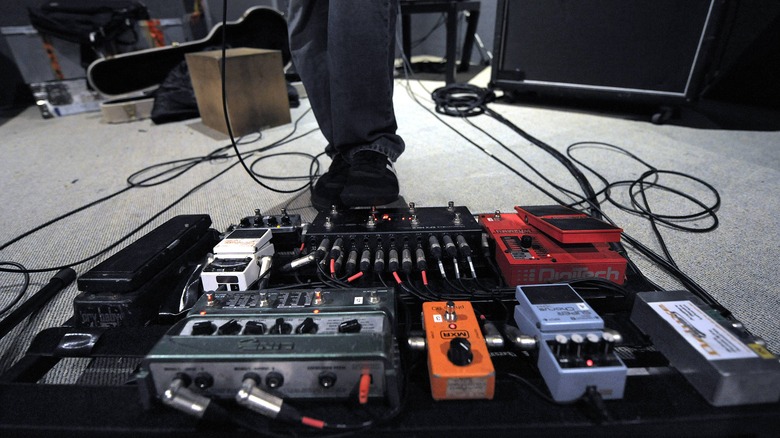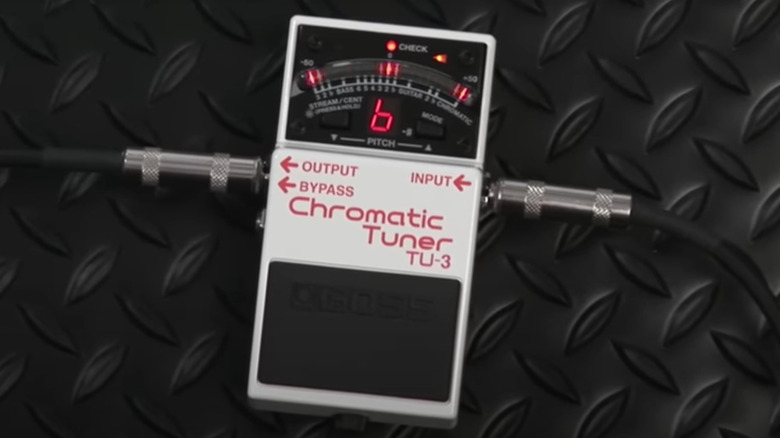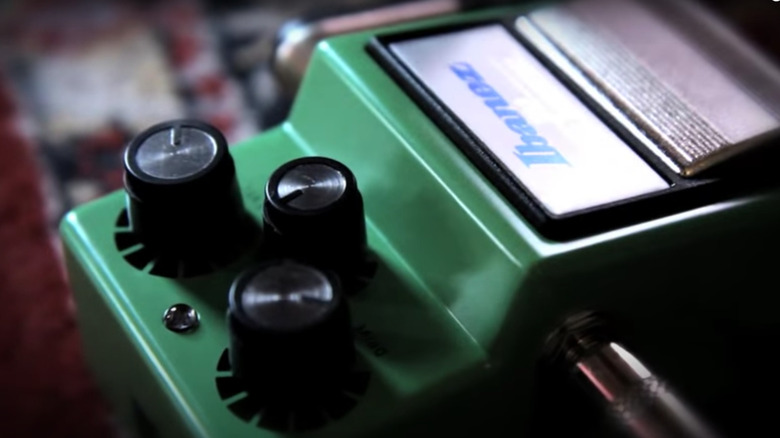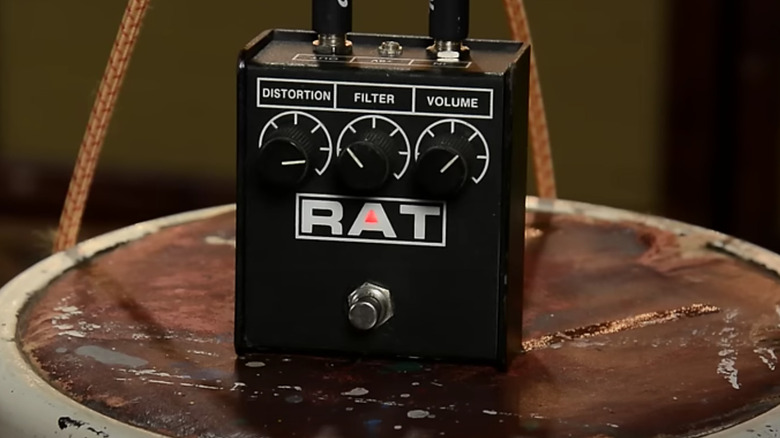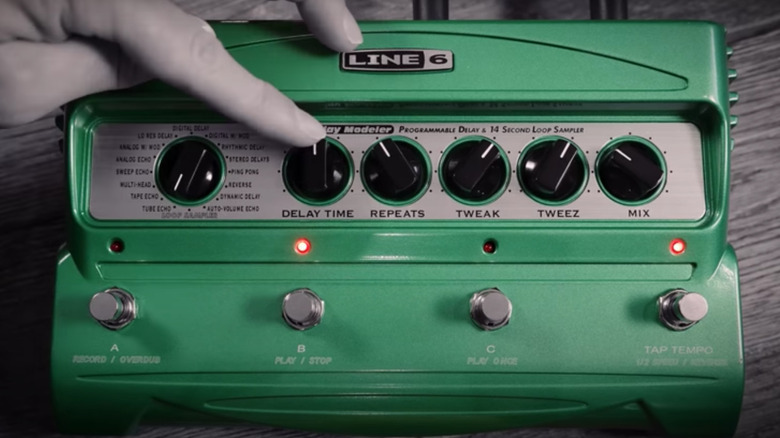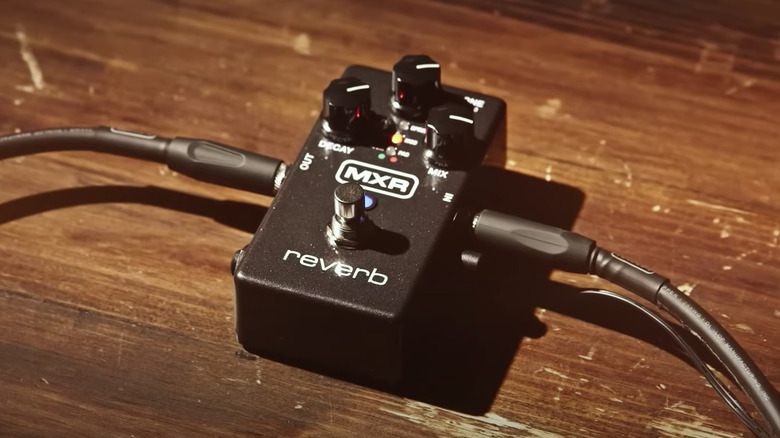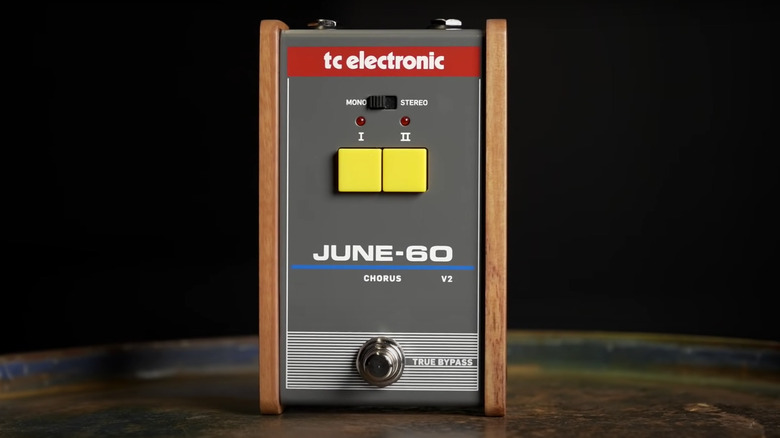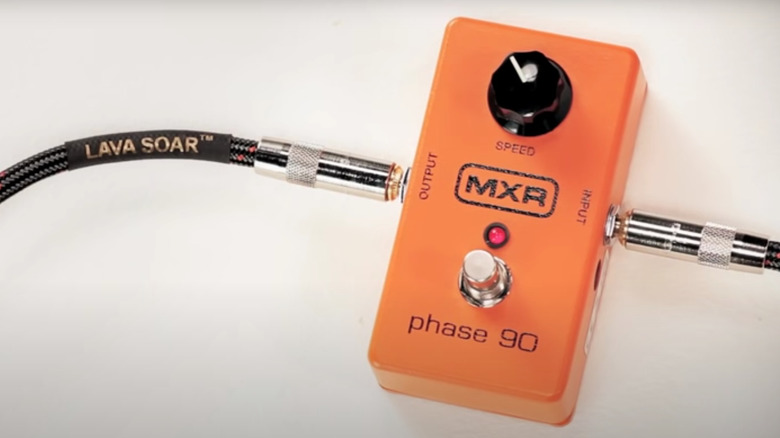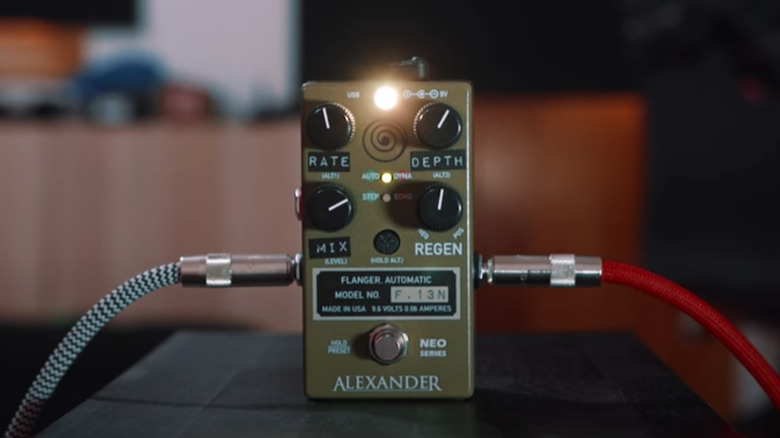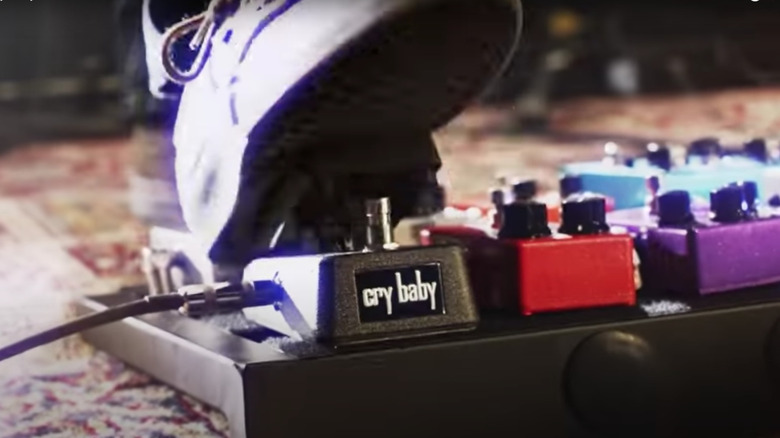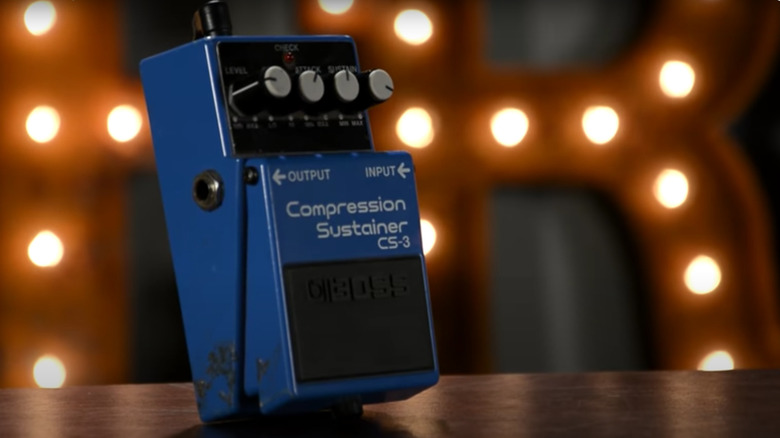10 Essential Guitar Pedals Every Guitarist Should Own
Every electric guitarist should have a few pedals in their arsenal to help shape their instrument's tone, boost its dynamics or sonic capabilities, or perform practical duties to ensure they always sound their best. Since the mid-20th century, when guitarists sought heavier sounds without pushing their amplifiers to breaking point, effects pedals have been used to creative effect, changing the face of modern music.
In the intervening years, there have been significant advancements in guitar effects, not least with digital modulation and delay effects that are more portable, versatile, and reliable. Modeling technology has further advanced guitar pedals' capabilities by faithfully emulating classic analog units that are more affordable and durable than their original counterparts.
From the acoustic player who favors a stripped-down selection of tuner, compressor, and reverb to the progressive rock guitarist whose playing relies upon layers of modulation and delay, everyone has their ideal pedal setup that's as unique to the guitarist as the music they create. Here are 10 types of guitar pedals that every guitarist would find valuable across various musical styles, and our picks of the best models within each category.
Tuner Pedal: Boss TU-3
Our first entry is the most pedestrian of guitar pedals but one of the most important. Accurate tuning is fundamental to a good performance, and it can often be hard to determine a perfect pitch while competing against a loud backline. A tuner pedal affords you the peace of mind that your strings are not only in tune relative to each other but also to other musicians. It also allows you to silently tune your guitar on stage before and during a set, so your audience isn't treated to a cacophony as you twang your strings from high E to low E.
Modern tuners present a backlit interface that enables easy pitch correction in low lighting (such as stage conditions), and many offer tuning modes so that you can adjust your pedal for alternate tunings with perfect accuracy. Most then detect the string you are tuning and use either a series of LEDs or an LCD to indicate whether you are sharp or flat and highlight when you reach the perfect pitch.
The Boss TU-3 is one such tuner pedal that does all of the above but has some useful additional features. It is built with the exact dimensions and profile as most Boss pedals and with the same rugged build quality that looks to last a lifetime. Features include a high brightness mode for outdoor and well-lit conditions. It also provides power to other pedals when connected in series so that the tuner can be plugged into an outlet, and all of your other effects can then be daisy chained from it with a standard cable. This eliminates the need for an additional power bank and leaves your pedalboard neat.
Overdrive Pedal: Ibanez Tube Screamer
What do you do when you need that extra boost and your amplifier doesn't go up to 11? An overdrive pedal may be the answer to your woes, as it increases gain and adds a moderate level of drive, giving your guitar a warmer, crunchier sound. It is also a useful dynamic tool that helps lead lines and double stops cut through the mix and provides added gain for soloing without oversaturated distortion levels.
Unlike distortion pedals, overdrive replicates the sound of a fully-cranked — or "overdriven" — tube amp. Think of the guitar tone on The Kinks' "You Really Got Me." In doing so, they are not as abrasive as their heavier counterpart and are more responsive to pick attacks and changes in volume while retaining the guitar's natural tone.
To many, the Ibanez Tube Screamer is the ultimate overdrive pedal. Originally given the designation TS-808, this traditionally green unit has been around since 1979 and was quickly adopted by guitarists Stevie Ray Vaughan and Eric Johnson. It is a simple transistor-based pedal with minimal controls, consisting of "Drive" for adding gain, "Tone" for boosted trebles and mellower lows, and "Level" to adjust volume relative to your amplifier. Its combination of simplicity, quality components, and distinctive tonal qualities won the Tube Screamer legions of fans, and it continues to be among the top-selling overdrive pedals in its latest iteration, the TS9.
Distortion Pedal: Pro Co RAT 2
Almost every electric guitarist owns a distortion pedal of some description or, failing that, a switchable high-gain channel on their amplifier. Distorted guitar tones have come to represent the sound of rock music ever since the early days of overdriven tube amp tones, which were first used by blues players of the 1940s and '50s. This was followed by the transistor-based fuzz pedals of the 1960s, as used by Keith Richards on the seminal hit "Satisfaction," which developed into the heavy, saturated stompbox sounds we know today.
Distortion pedals provide more aggressive distortion than overdrive and are ideal for heavier rhythm parts and leads, like Kurt Cobain's well-used Boss DS-1 unit that was used on every Nirvana record and sold at auction for $75,000.
The Pro Co RAT is one such distortion pedal that helped shape the sound of modern rock. It has been championed by James Hetfield of Metallica and Nuno Bettencourt of Extreme for its versatility of tones, which range from smooth-as-silk to chainsawing-sheet-steel. Like the Tube Screamer, it features three controls, namely "Distortion," "Filter," and "Volume," which perform much the same duties, although Filter blends with your guitar's natural tone when rolled back. The latest version, the RAT 2, is exceptional value at $100 for such a rugged piece of essential gear that will not let you down.
Delay Pedal: Line 6 DL4 MkII
Delay adds an echo effect to your guitar sound, creating a sense of space and depth. It is used across many contemporary genres, including alternative and psychedelic rock. It can be heard in the signature riff to David Bowie's "Let's Dance," as well as on just about every U2 record ever recorded. However, the delay effect can be traced back to the early days of rock n' roll, well before Boss released the first digital delay pedal, the DD-2, in 1984.
The first delay effects used magnetic tape to create a short delay, or "slapback" effect, that wasn't unlike a large hall reverb. Since then, various other methods have been experimented with, including the Roland Space Echo of the early 1970s, the first true solid-state precursor to the digital models we use today. Now, delay has become a guitar staple, and thanks to digital technology, it can be adjusted to tempo and set to multiple rhythmic parameters, making it far more helpful in music creation and performance.
While Boss is still a frontrunner in portable delay effects, since the turn of the century, Line 6 of California has made significant waves in digital guitar tech, not least with its DL4 MkII delay module. This beast offers 15 different delays, some modeled on vintage units, and each can be modified within various parameters. It even boasts a high-end loop sampler, which can be controlled via one of its four footswitches. Those looking for one delay to rule them all should undoubtedly have Line 6's flagship DL4 on their radar.
Reverb Pedal: MXR M300
Reverb is the most commonly used effect in live and recorded music and can be defined as an echo that reflects — or "reverberates" — in under 50 milliseconds. Producers use it to add space to vocals and most instruments (usually except for the bass, which sits in the center of the mix). Reverb is a handy dynamic tool that, when used properly, can make a track come to life or add ambiance and grandeur to a live performance.
A reverb pedal simulates the guitar's sound in a particular acoustic space. It enriches the guitar's natural tone and helps add character and "feel" to your playing. Notable uses of guitar reverb in popular music are Jeff Buckley's digital effect on "Hallelujah," Chris Isaak's heavily saturated "Wicked Game," and David Gilmour's Stratocaster on "Shine On You Crazy Diamond."
The MXR M300 offers six different reverbs, and each can add a different nuance to your tone. These include the standard plate and spring reverb options (modeled on classic studio and guitar amp technology) and four stylized options, including a rich room reverb and more complex modulation-based reverbs. MXR is known for making high-quality, compact pedals that offer excellent durability for the touring musician.
Chorus Pedal: TC Electronic June 60 V2
Guitar effects, like many things in life, go in and out of style. It could be said that chorus was the defining guitar sound of the 1980s, and some might say it was overused, but it is still a staple on guitar effects modules, amplifiers, and software. One of the main reasons for its enduring appeal is that it simply sounds cool, and it is one of the more subtle modulation effects that still adds plenty of character to clean guitar tones.
Chorus adds a shimmering, doubling effect to a guitar's signal. It helps create a richer and more textured tone and was commonly heard on arpeggiated riffs in late 20th-century rock and pop. Notable uses include Kurt Cobain's main guitar hook on "Come as You Are," Andy Summers' sparse chords on "Walking on the Moon," or Nile Rodgers' funky strumming on "Get Lucky."
The TC Electronic June 60 V2 is a faithful reconstruction of the vintage chorus sounds of the 1980s, specifically that of the Roland Juno 60 synthesizer on which its circuitry is based. It is beautifully presented with solid wood sides sandwiching a classic '80s-style interface with retro fonts and switches. It could barely be more straightforward, with switchable mono and stereo sound and two bold yellow switches. Switch 1 activates a slow and emotive chorus, whereas Switch 2 activates a faster, wobbly tone. This pedal is the epitome of the term "plug and play," but its limited sounds are reassuringly sublime.
Phaser Pedal: MXR Phase 90
Phasing is a modulation effect created by replicating the signal and time-shifting one very slightly. This "out of phase" result affects the frequency spectrum of the sound, which is then modulated using a low-frequency oscillator to produce a sweeping psychedelic or "spacey" tone. Phaser pedals work well with clean tones, and some models can be adjusted to track specific tempos.
Some spottings of a phaser in the wild include Brian May's use of one in "Sheer Heart Attack" and on Van Halen's classic "Eruption." It could be said that as a subtler relative of the flanger pedal, the phaser gets less exposure than its more flamboyant counterpart, but when used well, it becomes an essential component of a song. It is also versatile and used by guitarists and electric piano players, especially those who use classic mid-20th century instruments like the Fender Rhodes, including Billy Joel and Donald Fagen of Steely Dan.
It's hard to imagine a guitar pedal that is easier to use than the MXR Phase 90. It consists of a single rotary knob for "speed" that alters the intensity of the phasing effect, and that's it. Despite its simplicity, this pedal has become an icon among modulation effects. Famous guitarist proponents include Slash, Paul Gilbert, and the maestro Eddie Van Halen. Need we say more?
Flanger Pedal: Alexander F-13 Neo
As oscillators became a defining feature in music technology, we saw a shift in the capabilities of line-level instruments. Suddenly, we could use subtractive synthesis to dial in some of the weirdest and most wonderful sounds via outboard effects, including guitar pedals. One of the most recognized modulation effects is the flanger. Like the phaser, it uses a time delay to create phasing combined with a low-frequency oscillator to produce a distinct swirling sound, but it is far more pronounced.
This dynamic and unique modulation effect can be heard in the intro to Rage Against the Machine's "Killing in the Name," the bridge of The Eagles' "Life in the Fast Lane," and also on the drum break in Tears for Fears' "Head Over Heels." Such a conspicuous effect should be used sparingly and usually is, but it can add real identity to musical passages and make them stand out in the mix.
While it's hard to fault the durable workhorse effects of brands like Boss, which have been around for decades, one cannot ignore some of the boutique pedals that are increasingly popular for a good reason. One of these is the Alexander F-13 Neo, a pedal claimed to have been inspired by space junk recovered from Area 51. This aesthetic is reflected in its tone, or as Alexander describes it, "interplanetary flange." Stylistically, it's a simple square box, and it looks like they have used a label maker to name its parameters, giving it a homemade, custom feel. But dial in one of its multiple flanger patterns in Step Mode or its Echo Flanger effect, and it lives up to its other-worldly reputation.
Wah Pedal: Dunlop Crybaby
The wah pedal (or "wah-wah") alters the guitar's tone by shifting the frequency emphasis. Its onomatopoeic name refers to the vocal expression of its sound that could be likened to an infant crying. As the pedal is rocked back and forth, a ratchet rotates a tone potentiometer, which can be used to accentuate notes or rocked rhythmically to emphasize chord sequences. Some players like Carlos Santana and Frank Zappa used it in a "cocked" static position to boost midrange frequencies.
The wah pedal was invented in 1966 when guitar effects were becoming mainstream, and it was quickly adopted by the guitar heroes of the day, including Jimi Hendrix and Eric Clapton. Having found roots in rock music, it helped shape the sound of funk and disco, with its muted "wacka-wacka" chop, as used on Isaac Hayes' "Theme from Shaft."
The Dunlop Crybaby is the most popular wah pedal with a bright high end. It remains a common feature on the pedal boards of guitar players, including Slash and Kirk Hammet, each of whom has their own signature model. The range has been extended in recent years to include "Mini" and "Junior" models that are smaller than the original, as well as a "Q-Zone" auto-wah stomp box and the 95Q Crybaby, where you can alter the intensity of the tonal sweep.
Compressor Pedal: Boss CS-3
A compressor pedal is usually the last item on a guitarist's wish list, as it performs more of a functional role that will barely be noticeable to the average listener. Yet, once added to your arsenal, it is immediately apparent how it improves the dynamics of your playing, helps you cut through the mix, and adds sustain to your distorted leads.
A compressor works by regulating the volume of plucked or strummed notes. Reducing the difference between a loud and quiet attack enhances the guitar's overall sound and tightens up your playing. This is especially useful when playing rhythm lines and for bass players who don't rely as much on nuance and need a punchier sound.
There are many compressor pedals for guitarists, each with varying degrees of technicality, but the Boss CS-3 Compression Sustainer ably straddles the line between functionality and usability. The pedal consists of four rotary dials and a switch. The "Sustain" dial allows you to alter the amount the pedal hangs on a note before decaying, and the "Attack" control adjusts the compression-to-signal ratio. Put simply, this is where it kicks in. There's also a tone knob, and a level control, to balance your pedal with the amplifier's output. Then, all that's left to do is turn it on and let it work its magic.
